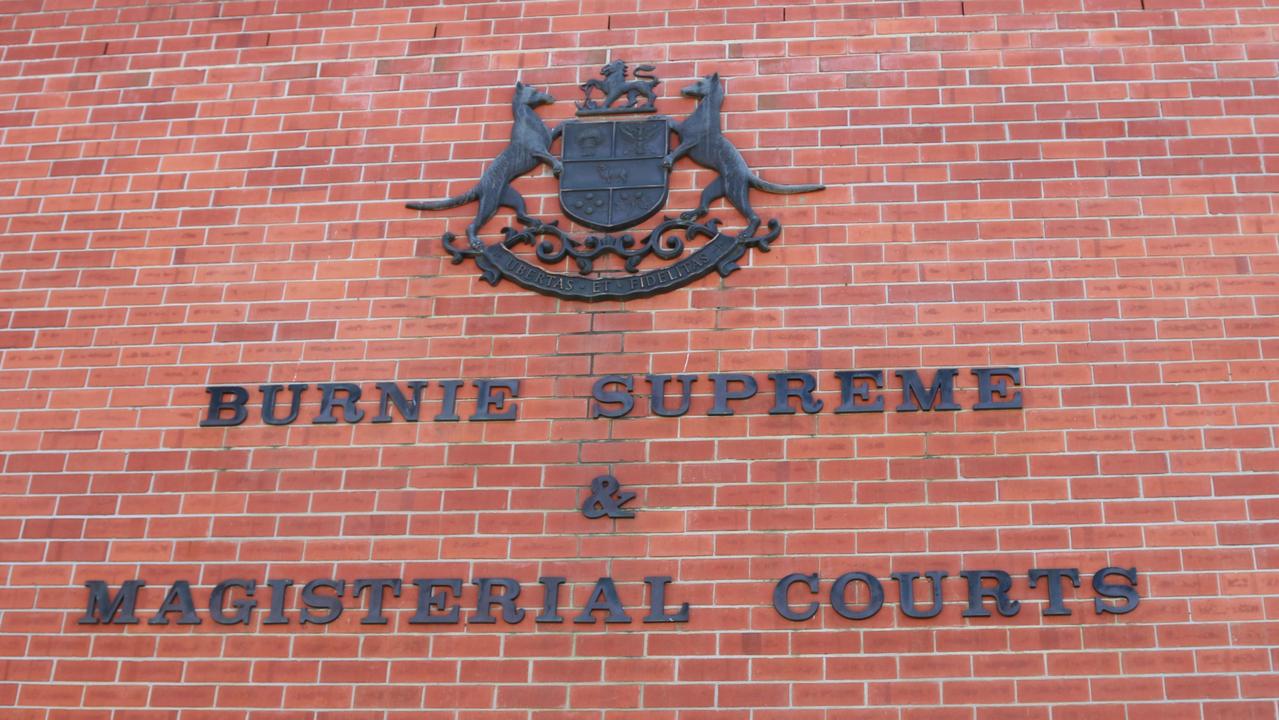Picture marking “significant” conservation milestone wins Beaker Street science photography prize
A ‘breathtaking’ picture of elusive embryos wins science photography prize. Why this picture marks a significant milestone in conservation efforts:
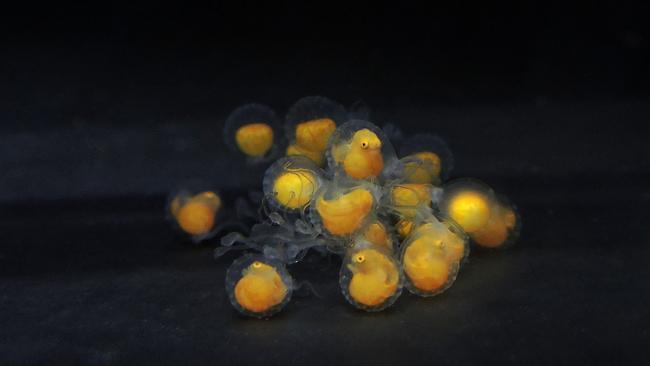
Tasmania
Don't miss out on the headlines from Tasmania. Followed categories will be added to My News.
A group of researchers at Utas have been emotionally waiting for glimpses of baby red handfish bred in captivity.
“Because there is nothing known about the species we really want to keep a close eye on if the eggs are fertilised,” Junior research fellow Dr Andrea Williamson said, who had never heard of handfish before coming to Tasmania for a job.
“We keep track of them every week taking pictures of them to see if they are actually fertilised,” the German born scientist said.
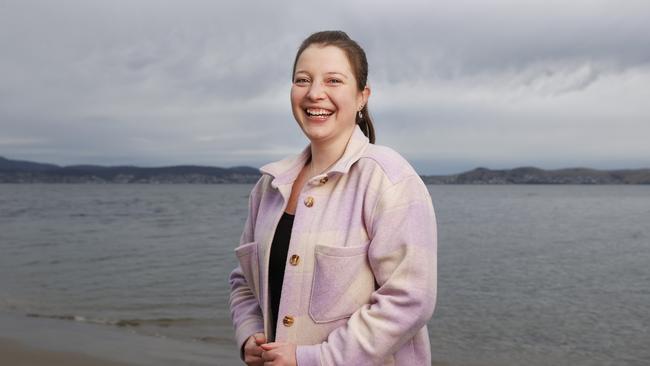
The Red handfish Conservation Team submitted a routine observation picture- glimpse into the endangered red handfish’s unique beginnings- to this year’s Beaker Street Science Photography Prize.
The Judge’s Choice winning photograph shows the successful development of red handfish embryos in captivity, marking a significant milestone in conservation efforts.
“This is an elusive picture that no one will come across but our team,” Dr Williamson said.
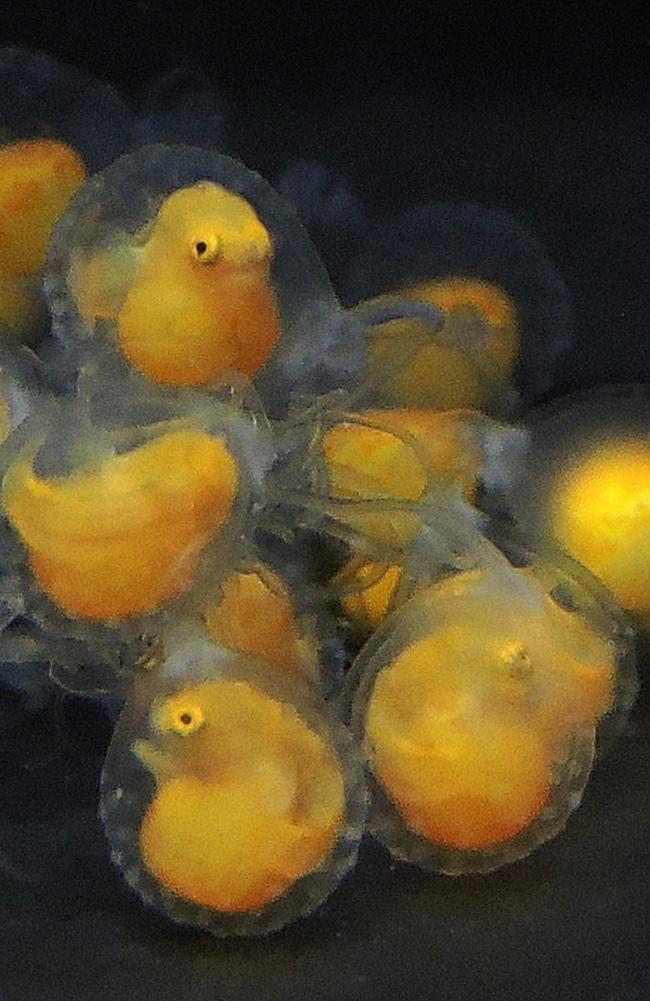
Dr Williamson said the team is looking at the eggs multiple times everyday and doing general husbandry, all while trying not to disturb the natural behaviours of the mum.
“The mum is still taking care of them the whole way through and cleaning them, she’s very protective of her eggs.”
She added that there was so little known about the red handfish when their team witnessed the mother cleaning the eggs in a unique way, they thought she was eating them.
“The mother, she is hanging around grooming the eggs,” Dr Williamson said.
“She’s not leaving but to look for food and then she comes straight back to the eggs.
“She cleans them by sucking them in and spitting them out.
“When we first saw this we got really scared that she might eat them,” she said.
Red handfish eggs take 25 days to show an embryo. The red handfish does not go through a larval stage, but are in the egg as a “tiny version” of an adult.
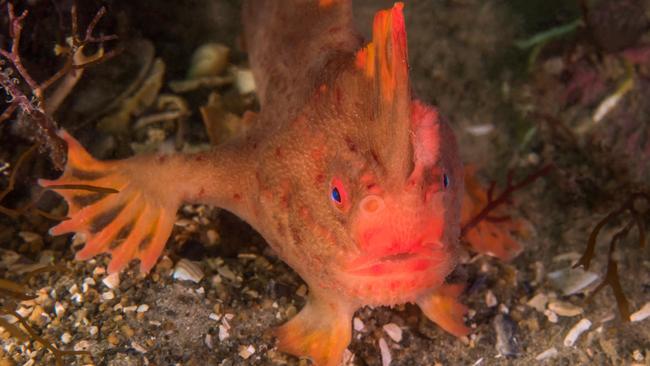
“We are emotionally waiting for those 25 days and then the first glimpse of them developing is just breathtaking,” Dr Williamson said.
Dr Williamson has a research background in lobster aquaculture and nutrition. She started with UTAS in 2019 as a casual looking after the handfish before being offered a permanent position.
She said she “fell in love” with the red handfish, which is endemic to southern Tasmania, with only about 100 adults left in the wild.
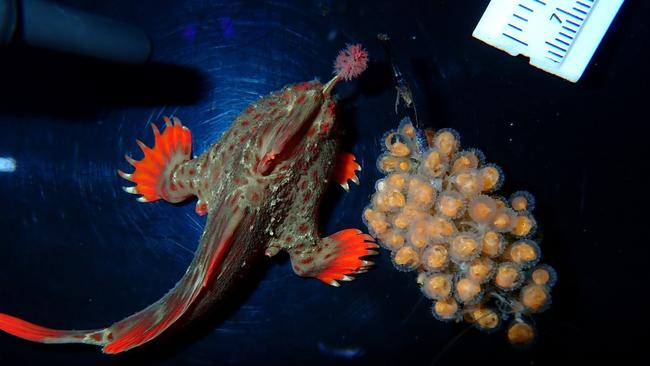
“They look really grumpy to everyone, but if you spend time with them they just have all different characters and faces.”
Last year the team led by doctors Jemina Stuart-Smith and Andrew Trotter successfully bred 21 handfish, which makes a huge impact to the small population, and their goal is to be able to release breeding age handfish back into the wild so they can repopulate.
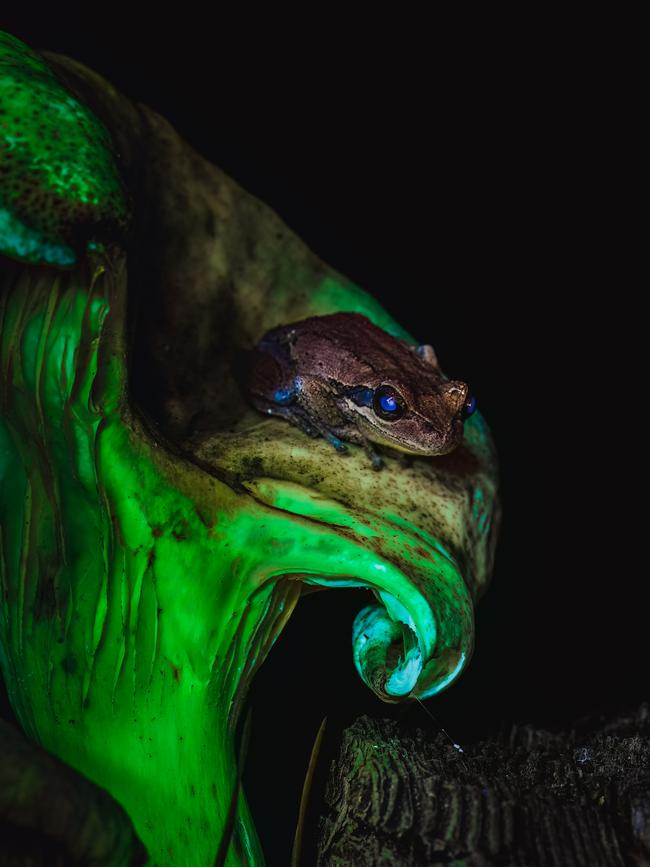
Other finalists in the prize included a picture captured by Toby Schrapel of a glowing bioluminescent mushroom with a biofluorescent frog with pops of glowing blue, and a picture showing human impact on the night sky by David Nolan.
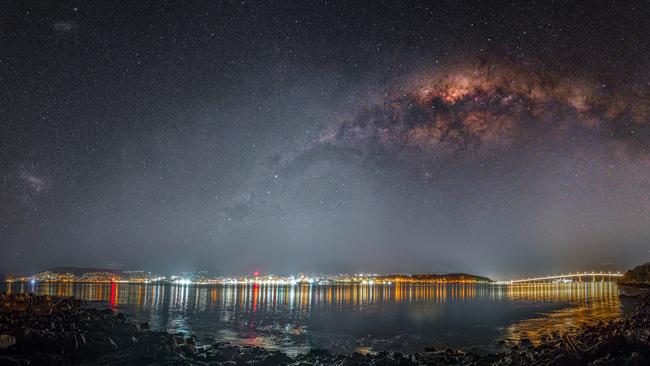
The 12 finalist images including Dr Williamson’s winning picture will be featured at the Tasmanian Museum and Art Gallery opening on Tuesday and running through to August 23.
The exhibition opening helps mark the start of Beaker Street Festival, which runs from Tuesday until August 13 with art and science events across the state.
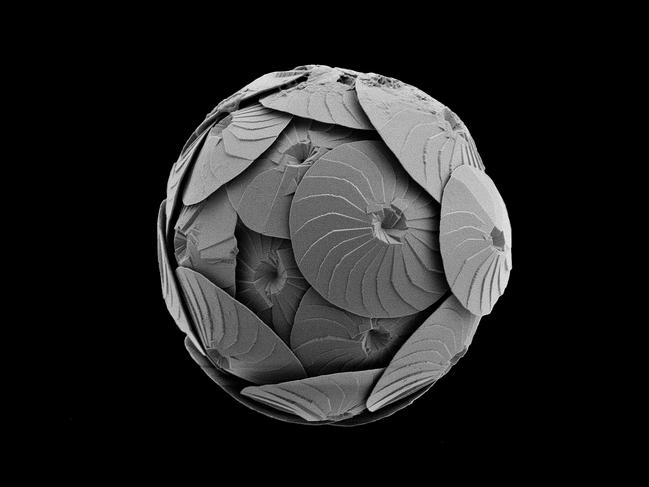
Unmissable events in the festival include the main stage session two on Friday, where Australian astronomer Alan Duffy will talk about the industrialisation of space and Australia’s role in mining the moon along with the first astronaut to train under the Australia flag Katherine Bennell-Pegg.
For more information vist https://www.beakerstreet.com.au/
More Coverage
Originally published as Picture marking “significant” conservation milestone wins Beaker Street science photography prize





